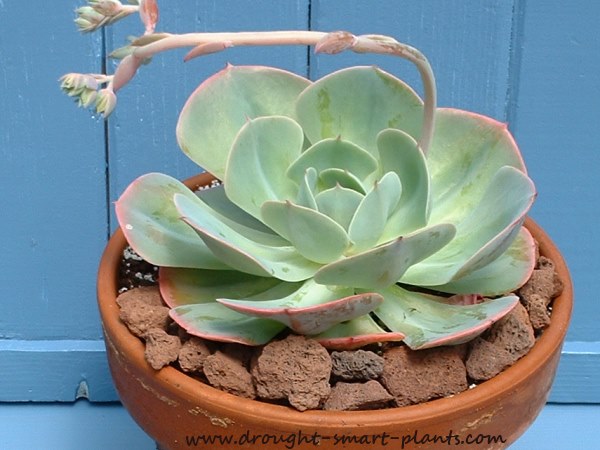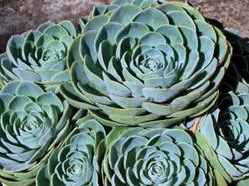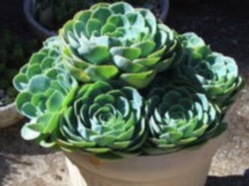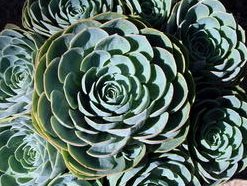Lovely Blue Species
As an Amazon Associate I earn from qualifying purchases.
Other links on this site may lead to other companies that I’m associated with.
Echeveria imbricata is sometimes referred to as Echeveria x imbricata, to indicate that it’s a hybrid.

A single plant forms a flat rosette of overlapping flat shield shaped leaves in silver blue with a slight pink edging in bright light.
The ultimate size of each rosette is about 14cm across, but it will form clusters of many offsets with age.
The eventual growth habit is bowl shaped, with many rosettes clustered together pushing each other upwards.
The most lovely feature of this growth habit is the way the older leaves dry up and form a papery basket around each of the rosettes.



The outer leaves of each individual plant will shrivel and turn a soft tan colour, with the powder blue inner leaves covered in a fine powder, the pruinose which protects the leaves from excess sunlight, and moisture loss.
This waxy coating is one of the most interesting characteristics of many Echeveria, and is found in varying degrees depending on the parentage of the plant.
Originally bred by Jean-Baptiste A. Deleuil of Marseilles in France around 1870 by crossing Echeveria glauca and Echeveria gibbiflora ‘Metallica’, and used extensively ever since as a parent to other Echeveria hybrids in turn.
Preferred conditions are bright light, and well drained soil. It seems to like a mulch of lava rock or other small stones around the base.
Propagation is best by leaf cuttings or offsets, as it is fairly slow growing.
Use as a specimen plant in a terracotta clay pot displayed in a grouping of similar Echeveria and other succulent plants.

